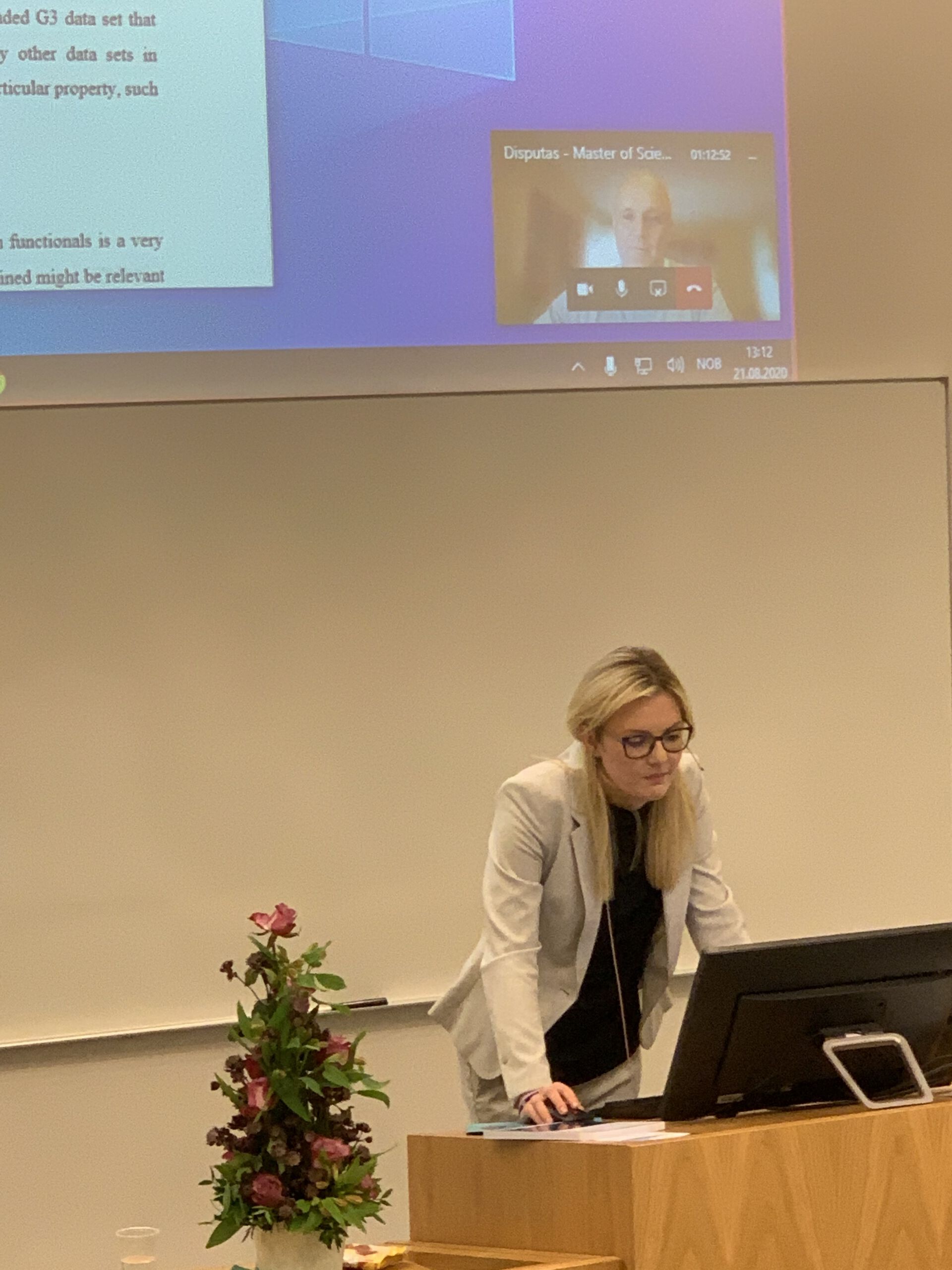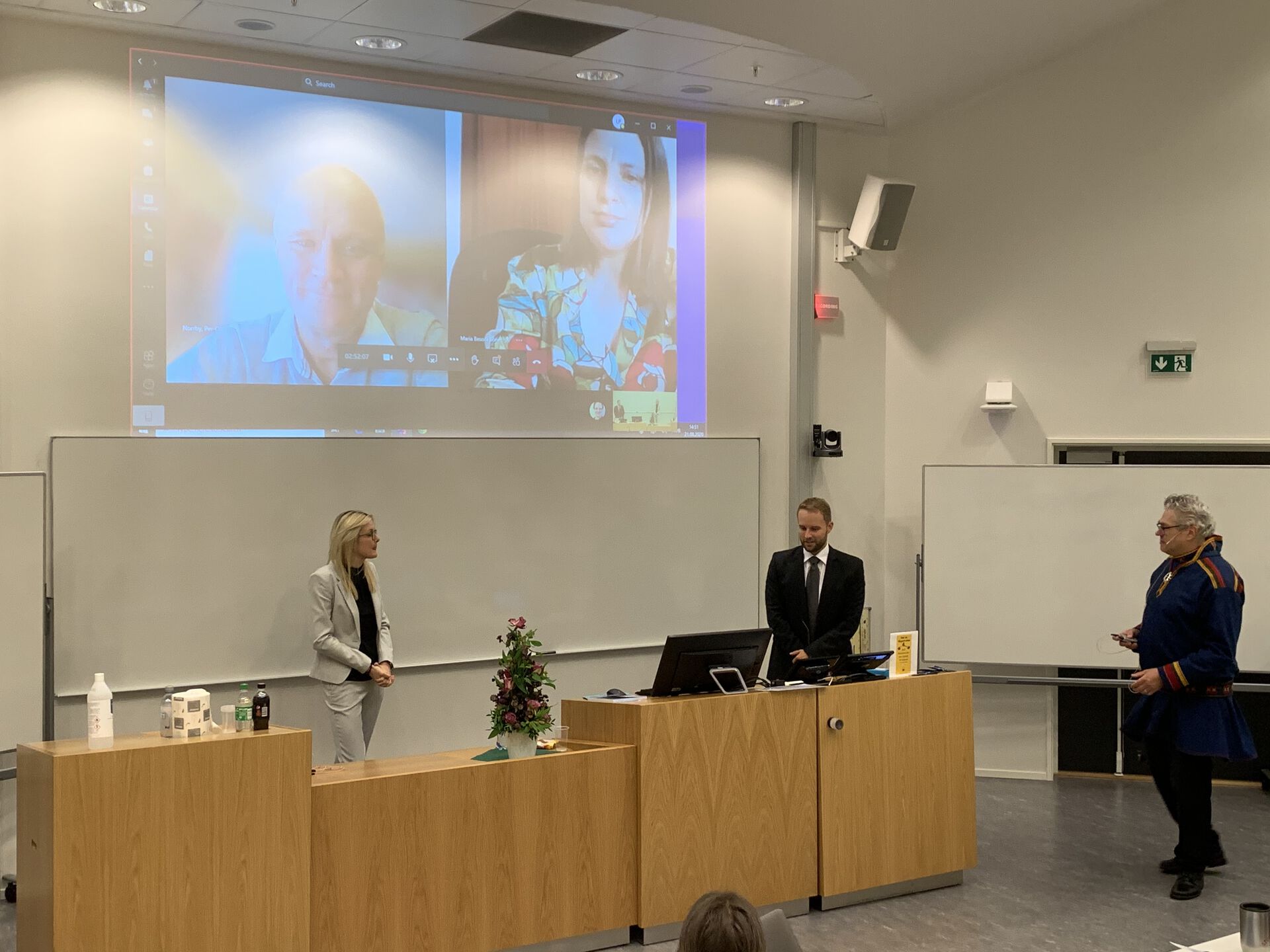Dr. Pavlovic defended her thesis in a mixed physical/online event. Her external opponents, Prof. Per-Ola Norrby, AstraZeneca (Sweden) and Dr. Maria Besora Bonet, Department of Physical and Inorganic Chemistry, Universitat Rovira I Virgili (Spain), both participated online. In addition to a small crowd physically present in the auditorium, the trial lecture was streamed and thus available to watch for all interested, and this allowed questions to be asked to the candidate also from outside of Norway.
The supervisors of Dr. Pavlovic work was Associate Professor Kathrin H. Hopmann and Professor Luca Frediani, both from the Hylleraas Centre at UiT The Arctic University of Norway.
The thesis is available from the open research archive of UiT The Arctic University of Norway: https://munin.uit.no/handle/10037/18943
 Popular scientific abstract:
Popular scientific abstract:
Metals can be used as catalysts to mediate the formation of chemical compounds. Insights into such reactions can be obtained with computational methods. In my PhD work, I used quantum chemistry to study the metalcatalyzed formation of chemicals that are important for the pharmaceutical industry.
Part of my work focused on using the metal rhodium to activate CO2 towards making new bonds. This work is important because CO2 is a promising carbon source that can replace fossil carbon in the chemical industry. My results show that CO2 is activated without binding to rhodium. This insight can help in the design of CO2 reactions that are selective for a certain product. Rhodium is expensive and chemists are trying to replace it with the cheaper metal cobalt.
Part of my work focused on cobalt-catalyzed hydrogenation reactions. My results show that cobalt catalysts can access many different reaction pathways. Knowledge about these pathways can help in the design of better cobalt catalysts.

